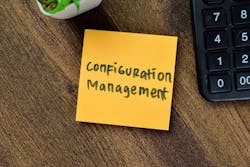Want to get a better handle on possible configurations? Take a closer look at your approach.
By Henrik Hulgaard, cofounder and vice president of product management, Configit
Manufacturing companies face increasingly complex configuration processes with an ever-evolving number of rules, dependencies and variants. This increases the need to perform comprehensive analyses of all valid configurations and rule dependencies in a product model, as well as developing and optimizing product models.
This increased pressure on current configuration processes creates a demand for more advanced configuration technology. Understanding the different technologies and capabilities of configuration solutions is critical to creating confidence that anything you sell is both buildable and profitable.
Understanding the landscape and the challenges
Product complexity is increasing. For some companies, there are millions upon millions of different potential configurations of a specific product that can be offered to customers. Each of these configurations comes with its own set of information such as price, bill of materials, documentation, CAD drawings, etc.
Organizations are trying to manage all of these different configurations and ensure that they are only offering customers possibilities that are legitimately available. Trying to keep this all organized and comprehensible, with visibility between different functions, is extremely difficult.
A wealth of possible combinations
On the manufacturing side, many companies are using enterprise-resource planning (ERP) systems to try to deal with this. Engineering departments are likely using some form of a product-lifecycle management (PLM) system. In both scenarios, what typically plays out is that you create rules and test scenarios for specific configurations. For example, if you’re a car manufacturer, you might ask, “What happens if I select this variant, and I select this size and this color?” You get a path that shows you what is available and how a customer would experience this process. But there’s no real analysis being done; it's just trial and error.
And if you have, for instance, a few hundred parameters you’re working with, trial and error is not sustainable or feasible. It’s too hard and time-intensive to cover more than just a small fraction of the possible combinations.
Most companies in this situation must simply test a sampling of potential scenarios and hope for the best. But this can lead to problems. A better solution is adopting the method of conducting the creation/analysis of valid configurations in a far more expansive way without eating up hours of employee time on trial and error. What if this could all be done in a far more structured and consolidated manner?
With a configuration solution, you can take all the different rules, calculate the effect of the rules, and then calculate the possible combinations those rules define. This process can also help turn up other interesting information. For instance, you might find out that not all color combinations are possible.
The key is that you’re discovering these limitations and exceptions before options are made available to customers. This prevents situations where a customer has selected a specific configuration, only for the engineering department to find that configuration isn’t possible, and the sales representative has to go back to the customer with the bad news.
A configuration solution offers the ability to do BOM (bill of materials) validation, which ensures that when a configuration comes in from the sales department, the “recipe” of parts is complete. It’s easy to make BOM mistakes, which for some configurations can cause problems. And you might not realize this until you’re at the manufacturing site.
The overarching result is that you validate your data before you put it out there, so you have confidence that your offerings are correct. The effect is that you have greater accuracy; you can catch errors in the rules before customers find them.
Working with a configuration tool gives you greater opportunity to optimize, as well. You will have a view of all the configurations, and you can combine this with the options that customers are likely to choose, which helps you reduce some complexity by bundling options, for instance, although most companies have not yet reached this level of maturity.
A new era in configuration management
Today's configurability options in manufacturing have become far too complex for manual, trial-and-error processes. All departments—sales, engineering, manufacturing and service—must work from one source of data truth to reduce errors and unnecessary duplication of effort. To be sure that anything you offer for sale can both be created and turn a profit, it is essential to understand the various abilities and opportunities that configuration solutions offer. Manufacturers can arrive at valid configurations faster and more accurately with the use of smart, modern configuration technology.
